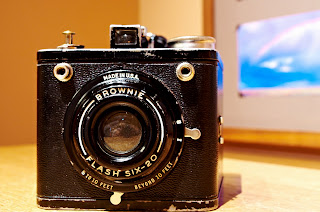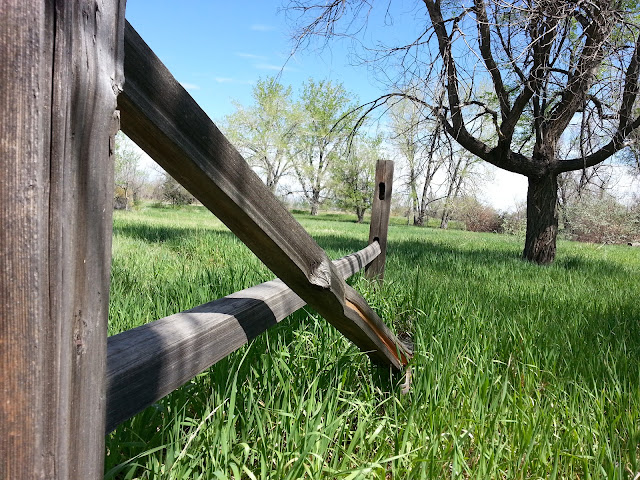The premise is simple: take a picture, upload it up to the internet aethyr and receive one in return. The names, no connections, no nothing. You take pictures. You send pictures. You receive pictures. That's all there is to Rando.
As they state on their Play page:
And that's exactly what it does: Rando allows you to take an image with your cell phone (in this case Android) and send it off into the wind. Only other people with the Rando app will receive an image and only after sending an image themselves.Description
Rando is an experimental photo exchange platform.
Give, receive and collect unique photos from random people from all over the world.A rando must be sent for one to be received. It's about gifting rather than sharing.You will never know who received the rando, they will never know who sent it.You will know the location of where it landed, the receiver will know where in the world it was taken.Build your rando collection with unique cultural sights from around the world.We deliberately haven’t incorporated social features into the application.No likes, no comments, no direct communication.Just Rando.
 |
| First Random Picture I Sent |
For a month now I've been sending random images into the universe: pictures of the area where I live, what I'm eating, my dog, the leaves on the trees and anything I think others might want to see. Or might not want to see. Unfiltered, unedited and unknown, that's the beauty of Rando!
Let's be honest, when I first heard about Rando I thought it was something akin to Chatroulette and recipients would be receiving unwanted pictures of penis' and other items no one really wants to gaze upon while toodling around on their device.
Unlike the Instagram square that made all the hipster's pants wet, as you can see to the right, the images are all round, creating a new challenge to framing and capturing content. This also gives Rando it's own unique look, different than the four corners look of nearly every other image on the internet.
Using the app is as basic as you'd think. Without post-editing, watermarks, frames or filters you just launch the app, touch the round button at the bottom, the image is recorded and then uploaded to the aethyr.
Boom! You're done.
Well, sort of.
In the upper right hand corner of the Rando screen are a series of grey dots -- one atop the other -- each one corresponding to an image you took awaiting delivery somewhere in the world. As images come to you delivered randomly from the Rando-verse, red dots will build up at the top of your Rando stream awaiting delivery from a queue to your device. Simply swipe downwards and the images come in one-by-one, or rather, swipe-by-swipe.
Tapping on a delivered image flips the image showing a map of the image's point of origin. I've noticed not all images have locations and I'm not sure if that has to do with GPS not being turned on or some other setting that doesn't seem to exist.
That's right, Rando's settings are very limited -- as in, there are none.
For a while I thought I noticed Rando's coming in similar in construct to Randos I sent. For example, if I sent a picture of the sunset, I'd receive a picture of the sky. If I sent a picture with a face (mine or my dog's) then I'd receive a picture with a face. If I sent a car, or other large man-made item, I'd receive an image of a large man-made item. This doesn't always seem to be the case, though. However, it was noticeable and now I pay attention to how closely the images are in subject matter. If this is true and not me just seeing patterns were there are no patterns, it means there's an algorithm out there selecting pictures and the service isn't completely random at all.
I've also noticed, most of the images seem to be coming from South Korea and the eastern half of Europe. Very few are from the western hemisphere and I've seen absolutely none what-so-ever from the southern hemisphere. At least, not that I can recall. Maybe the app just hasn't caught on yet.
The Good -- Or, Why I Like Rando
Random. I like random. More importantly, Rando is a view into how other people see their own worlds. Sure, there are pictures of books on tables, cups of coffee, ashtrays and other completely random bits of the world.
 |
| Rando I sent earlier today |
There are no watermarks, no post-processing and no userIDs. It's completely random. Like playing 5 card stud -- you play with the hand you're dealt. Since there are no watermarks there is no way to attach an URL or social media information aside from taking a picture of something with the URL or social media contact information. You cannot load a pre-existing image from your gallery to Rando, either. Point. Shoot. Send.
You have no choice in where the image is delivered. The Rando servers take care of the delivery duties by some sort of mathematical magic to which I'm not privy. Like I stated earlier, in order to send and receive the Randos, each user must have the app. There is no way to share the image to social media after receiving it or to save it to your device, but with a recent update, Rando now has a folder on your Android system to store your images. The only current method to save received images is by taking a screenshot while the image is prominent on your screen.
Maybe I'm different, but I like the randomness of not exactly curating a stream of photographers or styles.
The Bad -- Or, Things That Could Be Better
I have no idea why Rando insists on notifying me where my photos were sent. Unless there's a way to like the image or to communicate with the recipient, knowing where it went is pointless. Just knowing it's out there in the interverse is good enough, especially considering the whole purpose of Rando.
Being able to click the map and opening the corresponding Google Map would be a nice feature. Then the recipient could zoom into the location and learn more about where the image came from. Or, perhaps the corresponding search results/Wikipedia page for the location. Right now, I think the map would be easiest since a map screen shot is already shared.
Also, why the red dots and the having to pull the screen down to get new randos to show? I'd rather they just load, perhaps with a red dot next to them or with an outline of red (or whatever color) indicating they're new to my stream. Having to slide the screen down each time is cumbersome. Or if we must, can't a screen slide load all the images instead of one at a time? Maybe this is just a personal preference, but to me it seems more streamlined as a workflow.
For a while I thought it would be nice to edit images before sending them, even adding filters ala Instagram and it's clones, but then I recalled how I really like the raw unedited method of not being able to edit images. SOOC, or straight out of the camera, at it's finest. Kind of like going back to the most basic point and shoot film camera of our, well my, childhood. Knowing the image is WYSISYG really forces the photographer to pay attention to what s/he's doing since there is no option to "fix it in photoshop." From what I've received in my Rando stream, it appears most people aren't taking care to properly expose an image so I might be in the minority in this regard.
The Ugly -- Or, the Potential to Be Ugly
Since the images are completely random (I'm not sure if Rando keeps them and any identifying markers) there is always the potential for abuse. I'm not talking nudity or pornography, but rather pictures of abuse, pictures of a violent or child-pornographic nature, and anything else I can't think of at the moment.
The End
I like Rando. It's fun without hassle. It's the ultimate shoutout to the universe: this is my life! From a sociology perspective, you can see how other people live their lives as they choose to show you, and with the app's claims to randomness, there's no reason not to show the universe anything.
[I'm pretty sure there's something else I wanted to write, but for the life of me, I can't recall what it might have been. I'm sure it will come to me when I use the app later. Expect an update.]






























